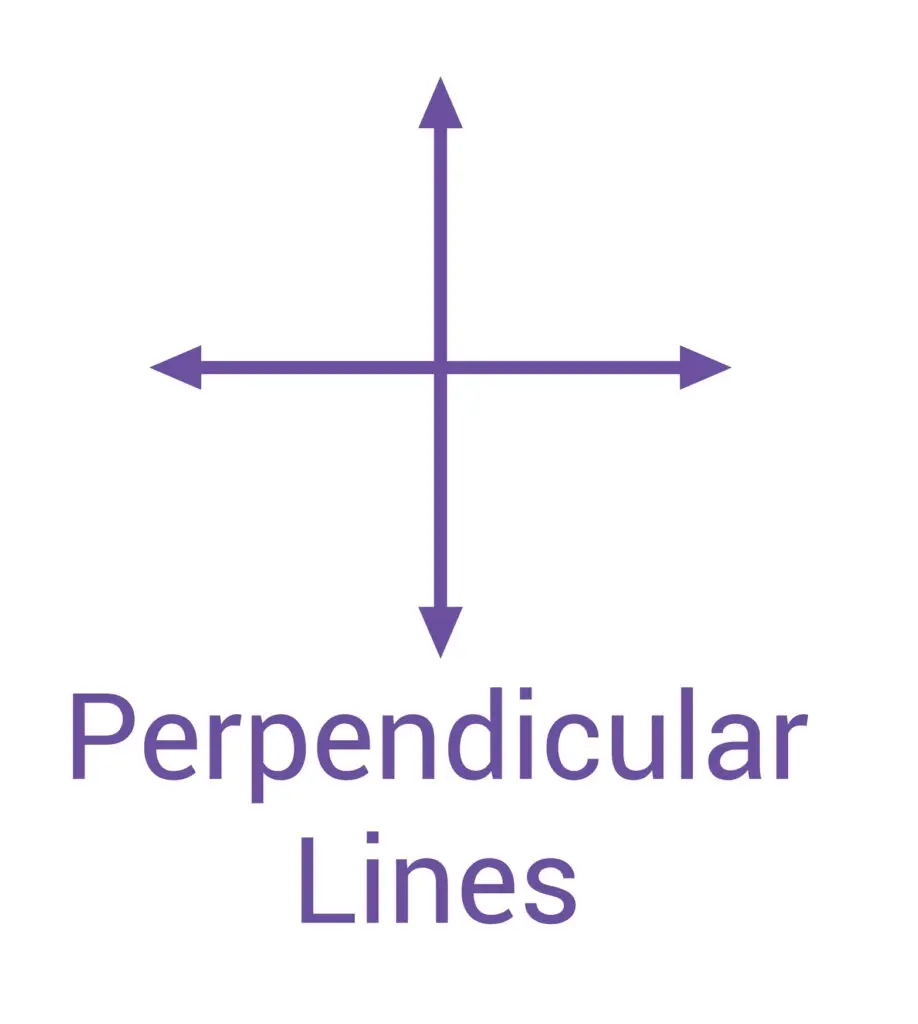Perpendicular Lines
What are Perpendicular lines?
Perpendicular lines in geometry are two lines that intersect to form a right angle, measuring exactly 90 degrees. These lines create four right angles at the point of intersection and are often used to define the concept of orthogonality in mathematics.
Perpendicular Lines and Triangles
Perpendicular lines help form right triangles. A right triangle always has one right angle, where two sides meet at 90 degrees. These triangles are used in many real-world applications, like ramps and bridges. The Pythagorean Theorem works perfectly with perpendicular lines to calculate side lengths. In geometry class, you’ll see how these triangles make solving area and height problems easier. Once you practice using them, you’ll see their importance in design and construction.
Perpendicular vs. Parallel Lines
Perpendicular and parallel lines are two of the most basic concepts in geometry. Parallel lines are always the same distance apart and never intersect no matter how far they go. They have the same slope if you graph them which means they stay the same distance apart.
For example the lines y=2x+3 and y=2x−4 are parallel because they have the same slope of 2. On the other hand perpendicular lines intersect at 90 degrees and form a “T” shape. Their slopes are negative reciprocals of each other. For example if one line has a slope of 3, a line perpendicular to it will have a slope of −1/3.
To distinguish between parallel and perpendicular lines, examine their slopes or angles of intersection. For lines on a graph, calculate the slopes: if they are identical, the lines are parallel. If the product of the slopes equals -1, the lines are perpendicular. Visually, parallel lines will appear as evenly spaced lines that never touch, while perpendicular lines will form a sharp right angle where they meet. Understanding these properties is crucial for solving geometric problems, drawing diagrams, or analyzing spatial relationships in both math and real-life applications, such as in construction or design.
Right Angles in Geometry
Right angles are special because they are exactly 90 degrees. These angles are key when working with perpendicular lines. In geometry, you’ll often draw two lines that cross to form a perfect “T” shape. To check if two lines are perpendicular, you can use a protractor or think about the slope. The slopes of perpendicular lines multiply to -1. This means they are the opposite of each other. Learning this rule makes solving geometry problems a lot easier and faster.
Finding Perpendicular Slopes
In coordinate geometry, you can check if two lines are perpendicular by their slopes. Slopes describe how steep a line is. For two lines to be perpendicular, one slope is the negative reciprocal of the other. For example, if one line has a slope of 2, the other must have -1/2. You can calculate slopes using the rise-over-run formula. Mastering this will help you solve equations for triangles, grids, and more. It’s a skill that connects geometry with algebra.
Using Perpendicular Lines in Real Life
Perpendicular lines are everywhere around us. Think about the corners of a room or the way streets cross at right angles. Engineers use perpendicular lines to design buildings and roads. For example, when creating a perfect square garden, they ensure the corners are at 90 degrees. This helps things stay balanced and stable. Architects also use them to make sure walls stand straight. Next time you see a crosswalk, notice how the lines meet the road at perfect right angles. Understanding perpendicular lines makes designs safer and more efficient.
